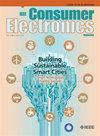通过对多模态数据的张紧关注和持续学习来转换医疗诊断
IF 10.9
2区 计算机科学
Q1 ENGINEERING, ELECTRICAL & ELECTRONIC
引用次数: 0
摘要
在不确定的医疗环境下分析多模态医疗数据仍然是医学图像分析和医疗大数据领域的一个重要课题。传统的机器学习算法受到数据融合不准确、缺乏对患者数据变化的适应性以及管理不确定性的挑战的严重阻碍。复杂的医学图像和多样化的数据来源使这些困难变得更糟,这导致诊断不太准确,医疗保健选择也不理想。为了解决这些紧迫的问题,本文提出了两种新的方法:使用渐进式神经网络(PNNs)进行持续学习和数据融合的张紧注意机制。张力化注意力机制通过使用动态的、任务特定的注意力来改善多模态数据融合,以改善跨模态的特征对齐,而pnn框架使用持续学习、记忆增强和领域自适应来确保数据不确定性下的鲁棒学习。我们在各种多模态数据集上测试了这些方法,如MIMIC-IV、CheXpert、MOST、OAI和心脏杂音,这些数据集提供了来自临床报告、胸部x光片、心脏杂音和其他异构数据源的医疗数据的全面表示。我们的实验结果表明,在诊断性能上有了显著的提高,CFI为0.10,KR得分为90.4%,MMC得分为0.097,表明了卓越的跨域泛化和鲁棒性。医疗保健人工智能应用可以通过使用专门的损失,如条件变分自编码器(CVAE)、对抗式对比学习(ACL)、互反正则化和域适应损失,来实现革命性的变化,这对于防止遗忘和保证在不断变化的数据流中学习的稳定性至关重要。本文章由计算机程序翻译,如有差异,请以英文原文为准。
Transforming Healthcare Diagnostics With Tensorized Attention and Continual Learning on Multi-Modal Data
Analyzing multi-modal medical data in the setting of uncertain healthcare situations continues to be a major topic in medical image analysis and healthcare big data. Traditional machine learning algorithms are severely hampered by inaccurate data fusion, a lack of adaptability to changing patient data, and challenges managing uncertainty. These difficulties are made worse by complicated medical images and diverse data sources, which results in less accurate diagnosis and worse-than-ideal healthcare choices. To tackle these urgent problems, this paper suggests two new approaches: Continual Learning using Progressive Neural Networks (PNNs) and Tensorized Attention Mechanism for Data Fusion. The Tensorized Attention Mechanism improves multi-modal data fusion by using dynamic, task-specific attention to improve feature alignment across modalities, and the PNNs framework uses continual learning, memory augmentation, and domain adaptation to ensure robust learning under data uncertainty. We test these methods on a variety of multi-modal datasets, such as MIMIC-IV, CheXpert, MOST, OAI, and Heart Murmur, which offer a comprehensive representation of medical data from clinical reports, chest X-rays, heart murmurs, and other heterogeneous data sources. Our experimental results show notable improvements in diagnostic performance, with notable results like a CFI of 0.10, a KR score of 90.4%, and an MMC score of 0.097, indicating superior generalization and robustness across domains. Healthcare AI applications could be revolutionized by the use of specialized losses, such as Conditional Variational Autoencoder (CVAE), Adversarial Contrastive Learning (ACL), Reciprocal Regularization, and domain adaptation losses, which are essential for preventing forgetting and guaranteeing learning stability across shifting data streams.
求助全文
通过发布文献求助,成功后即可免费获取论文全文。
去求助
来源期刊
CiteScore
7.70
自引率
9.30%
发文量
59
审稿时长
3.3 months
期刊介绍:
The main focus for the IEEE Transactions on Consumer Electronics is the engineering and research aspects of the theory, design, construction, manufacture or end use of mass market electronics, systems, software and services for consumers.

 求助内容:
求助内容: 应助结果提醒方式:
应助结果提醒方式:


